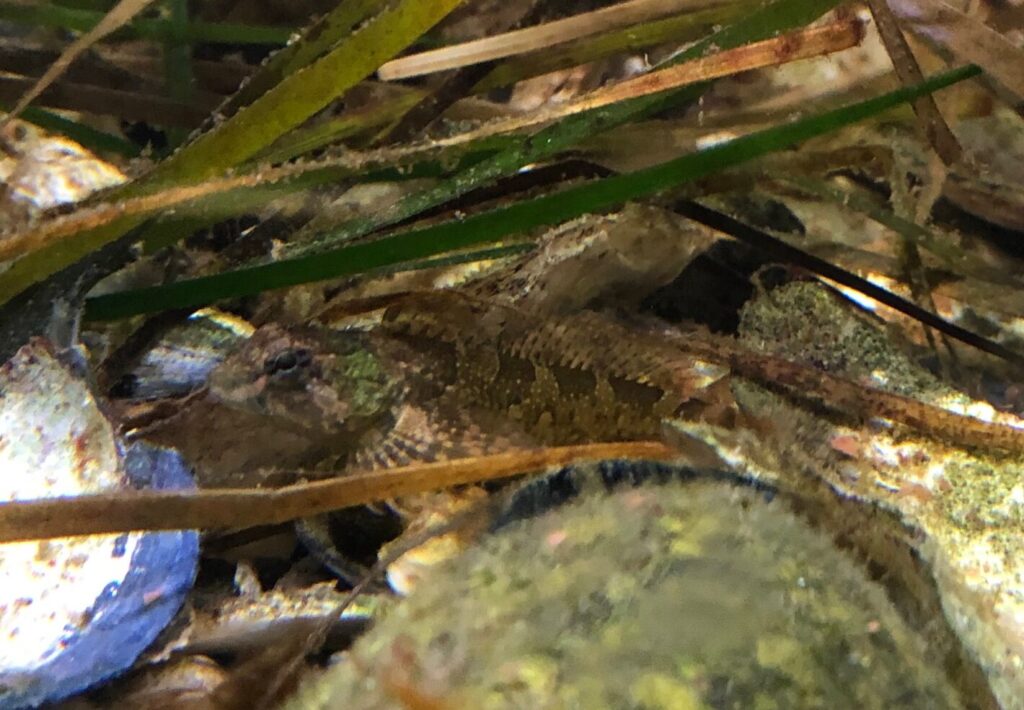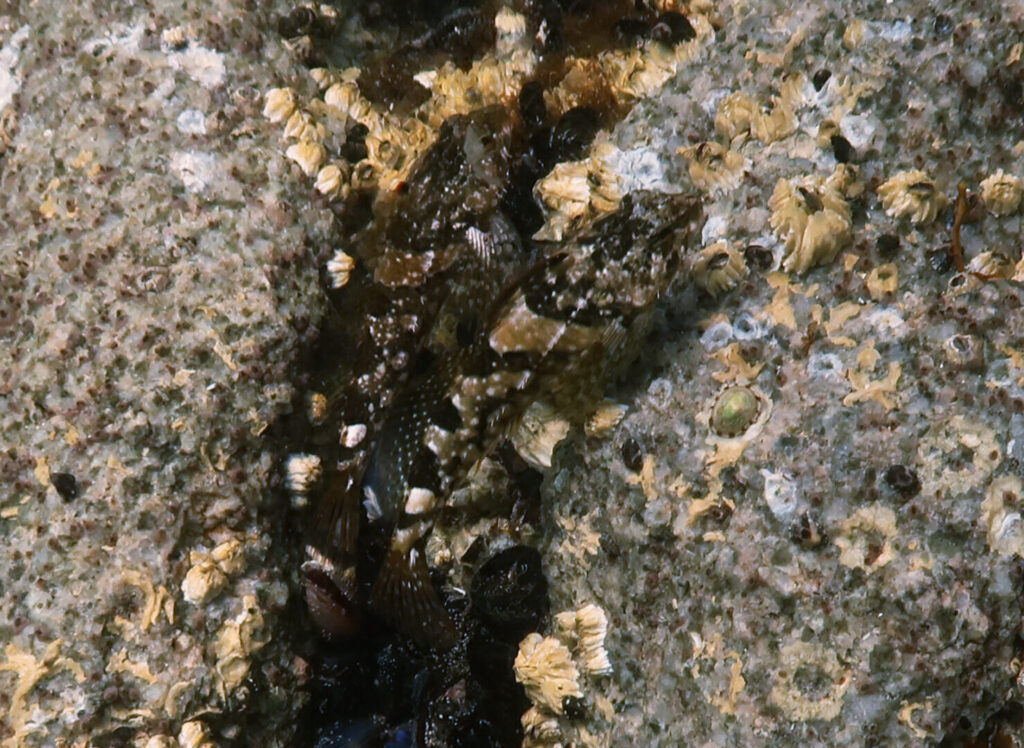Tidepool Sculpin (Oligocottus maculosus)

Tidepool sculpins are a very common species of intertidal fish that is found from central Alaska to southern California. Tidepool sculpins can grow up to 9 cm in length and are highly variable in colour, ranging from green to reddish-brown. They have five dark saddle patches on their backs, a single forked spine on their gill covers, and hair-like projections called cirri on their heads.

Tidepool sculpins can be hard to identify because of their highly variable colour, and because they closely resemble quite a few other sculpin species, such as saddleback sculpins (Oligocottus rimensis) and scalyhead sculpins (Artedius harringtoni). Both of these species have similar colouring to the tidepool sculpin, and have the same five saddle patches on their backs. It is difficult to distinguish a tidepool sculpin from a saddleback or scalyhead sculpin based on morphology. The cirri and gill flap spines are unique to tidepool sculpins, but can be hard to see in the field. However, saddleback and scalyhead sculpins are much less likely to be found in the intertidal zone, so if you find a sculpin in a tidepool is safe to assume you’ve found a tidepool sculpin!
Tidepool sculpins have a very small home range, and if they are displaced, they can find their way back to their home tidepool from up to 100 m away using their sense of smell. They can also extract oxygen from air, which allows them to breathe on land for hours at a time. This helps them to be successful in the intertidal zone, where they may be stranded among the rocks after the tide goes out. The main predator of tidepool sculpins is the kelp greenling (Hexagrammos decagrammus). Tidepool sculpin can detect kelp greenling by smell, and will quickly swim to a hiding place and remain still to avoid detection. Tidepool sculpins aren’t picky eaters, and may feed on a number of small marine invertebrates such as isopods, amphipods, mollusks, worms and barnacles.
To learn more, check out our Seaquaria video about tidepool sculpin. Tidepool Sculpins are a common resident in our summer touch tanks! Some other great resources are Central Coast Biodiversity & The Slater Museum.


